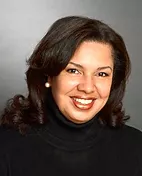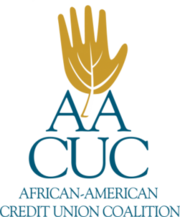“The World Economic Forum in Davos is usually fixated on the future. This year the focus was not on the future but the past. People delved back into history... Today's statesmen need to infuse their day-to-day decisions with a similar sense of history.” - Fareed Zakaria
What can history tell us about inclusive leadership? Plenty. As a management professor, I began researching answers to that question a few years ago, long before world leaders met in Davos. Surprisingly, I discovered that inclusive leaders move mountains! Their strategic actions have profoundly transformed business and society. But too often, their actions have been overlooked or obscured by time. This oversight matters because current approaches to Diversity, Equity & Inclusion (DE&I) are lacking.
Specifically, studies show that typical DE&I initiatives have raised expectations but produced disappointing results. Although organizations have more racial and gender diversity at mid- and low-levels, the work culture, relationships, and executive demographics are relatively static. While reasons for these disappointing outcomes vary, a major impediment to success is an insufficient understanding of the value of including different people and how leaders drive meaningful social change. To address this knowledge gap, we can continue theorizing and experimenting or hoping that old, impotent tactics suddenly work -- or we can seek evidence. I choose evidence.
I’ve researched the lives of historic business leaders and bankers that led profoundly positive, inclusive change. Their fascinating stories are instructive for leaders today and reveal specific, underutilized tactics that promote progress. After analyzing their actions through the prism of organizational psychology, I translated relevant insights into articles in the Inclusive Leaders in Action series and exercises for executive education. Here are a few highlights.
What Inclusive Leaders Do
- Aware of history, they focus on democracy. Democracy is such a powerful antidote to exclusion and oppression that we fought and won a Revolutionary War to have it. Inclusive leaders arduously advance the unfinished work of constructing democracy in their organizations and in society. Whether by writing policies, creating industries, refining institutions, sponsoring diverse talent, or serving the community – these people bring “outsiders” in. They do this by strategically anchoring their attention and efforts.
- Anchor yourself in a guiding principle. DE&I efforts are sometimes fragmented by focusing on social identities. To be clear, social identities matter because they tell us who is excluded and who needs to be included. The leaders that I researched took actions that benefitted different social identity groups (e.g., women, people of color, religious minorities, and average workers). However, their primary focus was often not on a particular identity group. Instead, these leaders were animated by one democratic principle that served the common good and they pursued it with vigor! As a result, multiple marginalized groups enjoyed the benefits as humanity was uplifted.
- Connect with everyone’s humanity. The leaders that I studied were capitalists, most of whom achieved significant wealth and power. Research suggests that it’s typical for such leaders to become oblivious to the concerns of people outside of their circle. Yet these leaders connected with all types of people. Further, they didn’t treat relationships as mere transactions, or people as human “resources” or “capital.” Instead, they treated people as fellow citizens and neighbors that possessed potential and inherent dignity. With a focus on democracy and uplifting humanity, leaders took action.
- Avoid copycat solutions: Too often, for the sake of expedience and legitimacy, organizations engage in a flurry of DE&I activities that mimic the failed initiatives of industry peers -- only to achieve the same lackluster results. Inclusive leaders know the difference between motion and progress. The change agents that I analyzed did not copy others’ solutions. Naturally, they were curious about best practices. But rather than simply adopt them, they exerted effort to seek new insights, improvise, and adapt learnings to their unique circumstances. Alphonse Dejardins, the founder of North America’s credit union industry, is a perfect example. Desjardins studied different cooperative models, read opposing opinions, and learned from different sources to create a novel banking solution. But he didn’t do it alone.
- Learn from and equip a diverse team. Complex challenges require different perspectives to solve them. Democracy and inclusion are complex challenges. However, when leaders delegate such challenges to a solo executive, siloed department, or ad hoc committee, the results are bound to disappoint. Instead, inclusive leaders assemble a team of people who are different; people who embrace, are ambivalent about, and oppose their views. Studies show that this mix of identity and ideological variety results in creative friction that produces new and better ideas. But that doesn’t happen automatically. The entire leadership team must prepare for change, be trained to manage and diffuse guiding principles throughout the organization, and expand to include different people. Herein lies the problem.
- Expect, manage, and overcome resistance. Any change effort inevitably meets with indifference, resistance, fear, self-interest, and outright sabotage – despite known benefits. Those impediments must be overcome for a diverse team to become high functioning. The analogue is America’s pluralistic democracy. America’s evolving democracy is oriented toward change and progress, and has no recent parallel for freedom, self-governance, resilience, innovation, and competition, which has made it the envy of the world. Yet, throughout history, a predictable minority has rejected the principles or people that have made it so. Although democracy is imperfect and unfinished, consider less desirable alternatives. Inclusive leaders equip themselves and their team to manage such a paradox. They also establish accountability structures to disrupt inertia and incrementalism to advance the mission. After preparing themselves, they dig in!
- Use the right tools for the job. The most important insight that I gained from exploring historic inclusive leaders is the magnitude of the challenge and range of viable solutions. More pointedly, you can’t move mountains with a teaspoon. Well you can, but it’s not efficient. Similarly, narrowly targeted DE&I solutions (e.g., hiring, recruitment, and allyship) are valuable because they move molehills that advance incremental progress but they are insufficient for achieving the monumental aims of democracy and inclusion. Instead of a teaspoon, inclusive leaders use a tractor – different, more robust frameworks to create a context in which targeted solutions can succeed. Historic leaders that I’ve examined did just that. Democracy is one of their preferred frameworks; management scholarship provides many more. I help leaders explore and apply those frameworks to scale their mountain.
As Zakaria noted, today’s leaders need to infuse their decisions with the wisdom of history. That is especially true regarding inclusive leaders. Inclusion, like democracy, is a monumental and worthwhile undertaking. Yet we don’t have to settle for inertia or incremental progress. History offers us an expanded range of solutions for navigating complexity and inevitable challenges. And historic leaders, with all of their faults and foibles, show us how we too can move mountains to achieve meaningful results.








